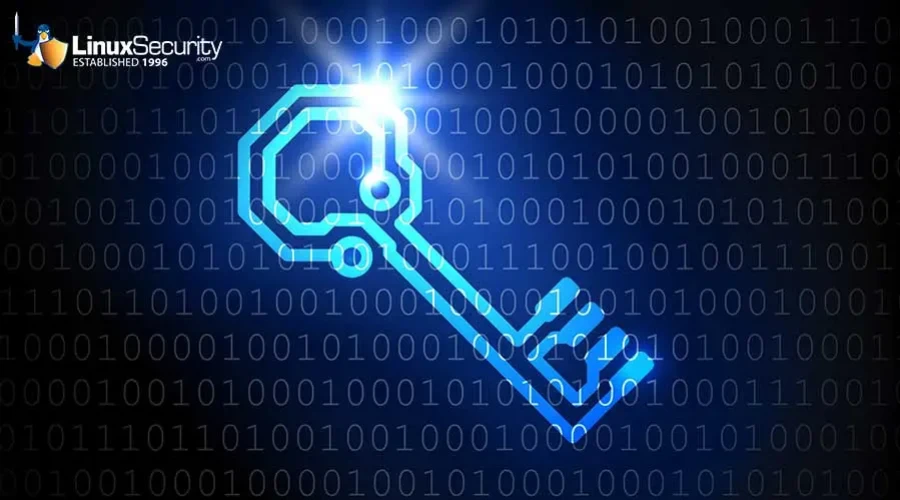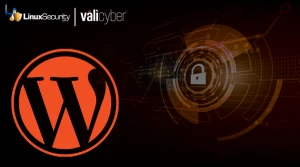Enterprise Encryption Strategy for Linux

As more organizations switch to remote or hybrid work environments, businesses have started to rely on cloud computing and mobility to secure their company. Therefore, endpoint encryption on Linux servers has become all the more valuable and necessary. However, companies must properly configure and manage their endpoint devices to prevent cybercriminals from breaching systems and stealing sensitive data.
We at LinuxSecurity spoke with WinMagic, a leading endpoint encryption provider, to discuss how companies can fortify their infosec architecture with effective endpoint security strategies. This article will discuss improving manageability and compliance in enterprise encryption using WinMagic SecureDoc for Linux, a comprehensive disk solution.
FAQs: What is Enterprise Encryption?
Enterprise encryption is a higher-ranked form of coding that protects the data in your files from cloud security breaches. While typical encryption focuses on device-related keys, enterprise encryption takes it to a different level by making everything in a server inaccessible without said key. Such a system ensures that you do not face attacks on network security that could harm your company, including data loss, significant downtime, and reputational damage.
What is Enterprise-Level File Encryption?
Enterprise-level file encryption expands full-disk encryption, preventing unauthorized access in an even larger cybersecurity landscape. Throughout a piece of data’s lifecycle, enterprise-level file encryption will keep the product safe so that you never have to concern yourself with the possible implications of a network security threat. Here are the ways an enterprise encryption strategy prevents issues during the data’s entire life:
- When data is At Rest, a company stores the information and does not actively pass it around devices and systems.
- When data is In Transit, a business transfers the information to another location, either in the server, across devices, or to storage.
- When data is In Use, an organization accesses the information regularly to update, view, and complete daily operations.
Who Should Encrypt the Data in My Company?
Typically, an administrator or employee of a higher ranking will be able to encrypt data. These workers know more about an organization's network security toolkits, so they can adequately implement and configure encryption keys in a business and keep data safe.
What Enterprise Data Encryption Solutions Does Linux Offer?
While Linux databases and endpoints are more secure than Windows cloud security frameworks, Linux is not entirely immune to malware attacks in network security and other threats. Malware incidents grew by over three hundred percent in 2020, and one in five Americans encountered ransomware. Linux endpoint encryption can only do so much to combat these threats. Cybercriminals started targeting Linux after realizing it was a secure network with a growing user base and powered various high-value systems worldwide. Therefore, organizations must protect their systems and information by utilizing robust security mechanisms on all Linux devices.
What Capabilities Does Linux Disk Encryption Carry?
 Enterprises struggle with Linux’s built-in capabilities, as some employees might be confused about how to approach configuring the disk encryption options. Let’s review dm-crypt and LUKS and how users can implement their services on their Linux systems.
Enterprises struggle with Linux’s built-in capabilities, as some employees might be confused about how to approach configuring the disk encryption options. Let’s review dm-crypt and LUKS and how users can implement their services on their Linux systems.
- dm-crypt is a transparent disk encryption subsystem within the Linux kernel. This block device-based abstraction is ideal for Full Disk Encryption (FDE). The encryption can work over other block devices and utilizes cryptographic routines from the kernel’s Crypto API to enforce and install the encryptions.
- Linux Unified Key Setup (LUKS) is a disk encryption specification that provides a cloud security framework for password management while being a platform-independent disk format that can use standard encryption headers to protect your server. LUKS is an enhanced cryptsetup that operates on Linux as a disk encryption backend for dm-crypt.
What Are The Best Business Key Management Strategies Companies Should Use?
Meanwhile, dm-crypt and LUKS can formulate a strong password authentication FDE application. However, using these features is not an enterprise-grade solution. WinMagic highlights the additional needs you must implement into your data at rest protection on Linux.
Strategy 1: IT Compliance and Centralized Management
Be sure that your regulatory cloud security policies follow local and industrial cybersecurity standards so that your system monitoring prevents misconfigured compliance. Encrypt sensitive data and protect intellectual property, which can help in the long run to avoid leaving your employees and clients in a panic if your server encounters network security issues.
The California Senate Bill 1386 was among the first of many U.S. and international security breach notification laws. The Bill required that organizations inform any victim of a breach of unencrypted personal information. Companies, however, do not need to notify the user of violations of encrypted information. Organizations must install a key management system to prove that all data is encrypted and does not require notification in the event of a breach. This centralized solution is crucial to ensuring compliance, protecting privacy, and creating a separation between higher and lower-level employees and their access to information.
Implementing WinMagic SecureDoc for Linux can allow organizations to oversee all communications to guarantee your server encrypts all data. Therefore, the IT department has protection if devices or information goes missing. You must also formulate password recovery procedures, operations, and management on a central console so that you can back up all encrypted data.
Strategy 2: Zero Trust on Linux with SecureDoc
 Zero Trust protects your server by automatically assuming all network traffic is suspicious. However, most companies do not implement the server to the highest degree, leaving organizations susceptible to network security threats that could be detrimental to a server. According to the US government, an effective encryption strategy values an encryption service combined with a memorandum guiding employees and businesses in the right direction.
Zero Trust protects your server by automatically assuming all network traffic is suspicious. However, most companies do not implement the server to the highest degree, leaving organizations susceptible to network security threats that could be detrimental to a server. According to the US government, an effective encryption strategy values an encryption service combined with a memorandum guiding employees and businesses in the right direction.
It can be challenging to follow Zero Trust recommendations, as it could lead to reduced productivity and increased costs associated with dedicating more time and energy to administering cybersecurity projects. Fortunately, comprehensive encryption solutions, like SecureDoc for Linux, can follow Zero Trust requirements without sacrificing your valuable resources. Here is a brief description of SecureDoc for Linux and the benefits it offers to users:
- Log in and work on disk machines during live encryption conversions.
- Enable a pre-boot network-based authentication system as an additional data and network security measure to protect your data during boot-ups.
- Remove keys on stolen devices to ensure cybercriminals cannot access information even with the correct credentials.
- Avoid reinstalling an operating system before commencing encryption.
- Monitor encryption status through readily available administrative portals.
- Allow AD and Azure AD users to log into encrypted devices.
- Reduce the necessity for pre-provisioned access on a device.
- Work on a central management system with the Enterprise Server that allows you to navigate Linux, Windows, and Mac endpoints.
With these critical features of WinMagic SecureDoc for Linux, organizations can support an integrated Zero Trust strategy that fortifies their information security architecture.
Strategy 3: Active Directory (AD) and Pre-Boot Authentication
WinMagic SecureDoc for Linux allows organizations to use AD usernames and passwords to authenticate users during a pre-boot. Native Linux requires pre-boot passwords and can even demand a new password for each volume on the system, preventing Linux from supporting AD solutions on its own.
Strategy 4: Handling Compromised Devices with Crypto-Erasing
Enterprises must protect their server by utilizing root volume encryption. However, native Linux FDE requires improved mechanisms to employ root volume services. Implement initial online encryption like SecureDoc for Linux to encrypt preinstalled Linux laptops by wiping the disk and reinstalling Linux with encryption enabled. Fortify cryptography cybersecurity to erase data from compromised devices and record such actions for compliance checks following an attack.
What is WinMagic SecureDoc for Linux?
SecureDoc for Linux offers scalable, enterprise-class, full-drive encryption for Linux endpoints. This defense-in-depth enterprise encryption for Linux has two main components:
- Encryption: Linux layers dm-crypt on native encryption to unify all enterprises and device platforms.
- Key Management: Smart Card has Multi-Factor Authentication at pre-boot that agency systems can implement to support phishing-resistant password policies. OMB Memorandum M-19-17 requires that organizations utilize PIV and Derived PIV10 as a primary security measure for entering Federal Information Systems.
WinMagic VP of Technology and CISO Garry McCracken elaborates, "Linux has had built-in encryption for endpoints for several years. Yet, many enterprises struggle with encryption on Linux endpoints, such as reinstallation of the operating system before commencing on encryption, and some solutions only provide encryption for Windows devices. Our SecureDoc for Linux solution builds on the capabilities available in Linux (such as dm-crypt), providing an overarching layer of manageability, visibility, and automation that scales at an enterprise level and facilitates compliance."
Our Final Thoughts on Enterprise Encryption
Organizations must secure Linux endpoints in an information security architecture for their enterprise as data and network security threats grow in severity and strength. Prioritize IT security compliance and management, Zero Trust, Active Directory, and crypto-erasing strategies to protect your server. SecureDoc for Linux can enhance built-in disk encryption capabilities with scalable, multi-layered endpoint encryption.
Garry McCracken, WinMagic's CISSP, VP of Tech, and CISO, hosted an Enterprise Linux Encryption Management webinar with Dave Wreski, Guardian Digital's CEO and Linux Security expert, where they discussed how organizations can address Linux encryption management challenges with compliance and centralized key management issues.





















